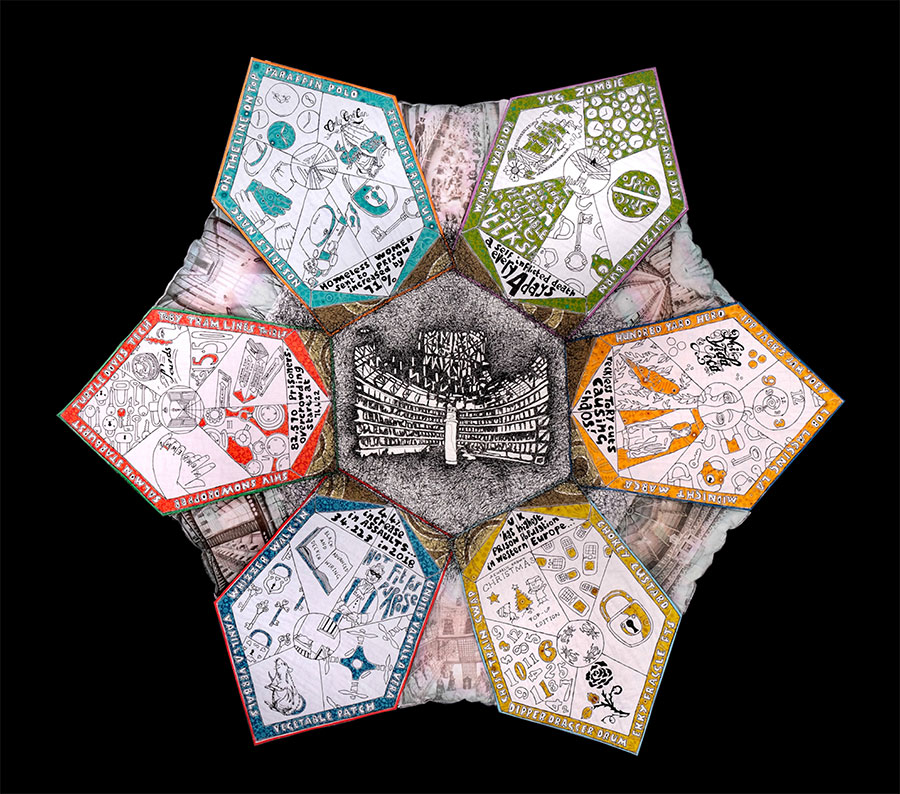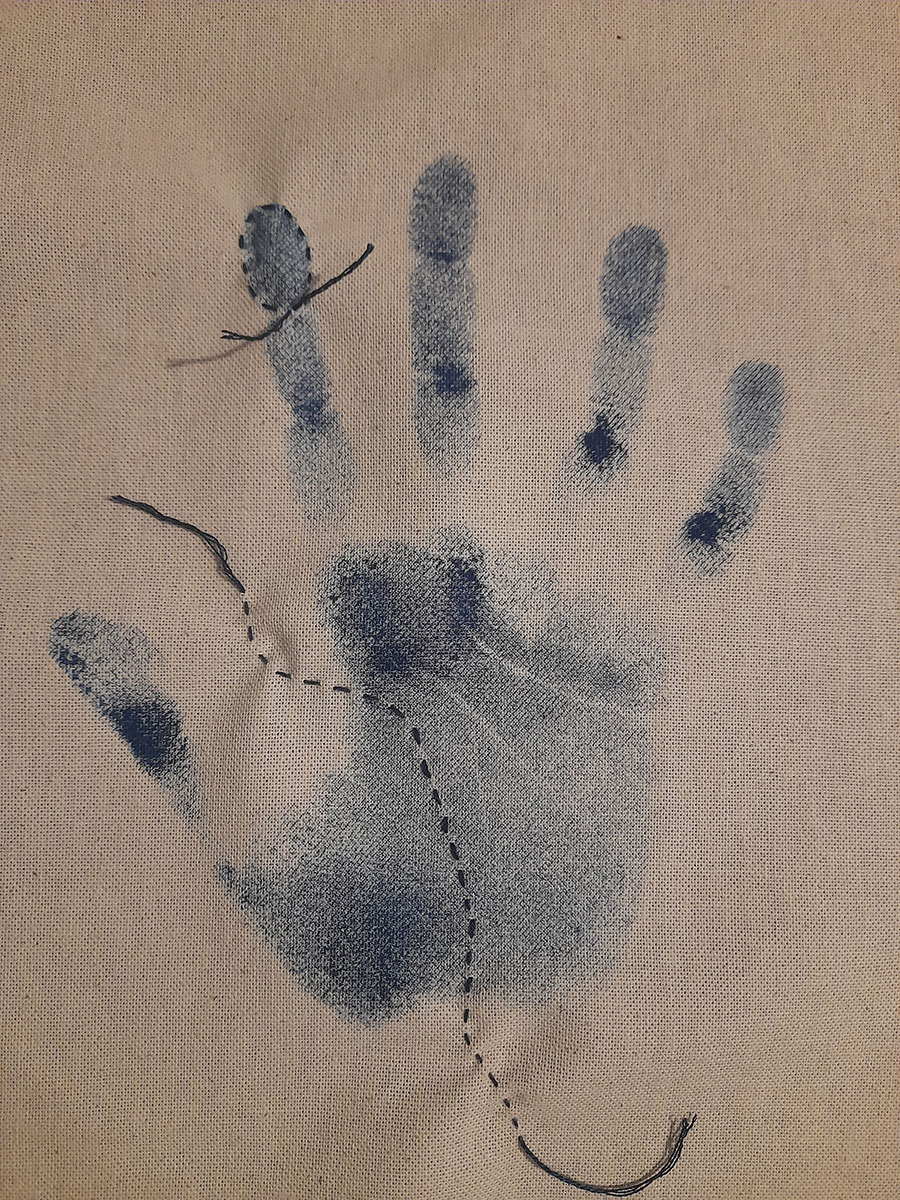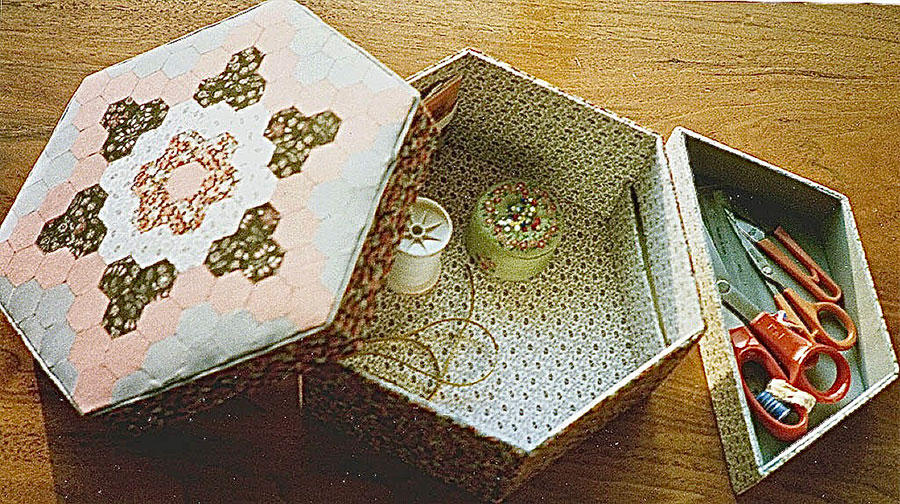BMK Prize for Critical Writing in Textiles 2023
WINNER
James Fox
A Stitch in Time: a textile work unpicking our prison system
£1,000
‘A stitch in time’ (reverse appliqué with free machine embroidery, 150cm × 150cm) was produced in response to James’s experience as an educator and artist, first as a tutor at a young offenders’ institute and then as an artist in residence at a homeless shelter in his hometown of Lancaster.
The Panopticon building, and the idea of being ‘constantly observed’ were the underlying considerations when James developed a framework for his research.
James writes:
‘What else can I do but go and rob!’ This remark was made to me by a young man using the facilities at the homeless shelter after recently being released from prison. He had been given £46 in cash and a one-way train ticket after a two-year sentence. With no address, little chance of employment and no money, he was resigned to the treadmill of reoffending and incarceration. This conversation was the inspiration for my investigation, and the development of the artwork ‘A stitch in time’.
The aim of this practice-based research was to produce an artwork responding to aspects of the British prison system, and especially my observations on the buildings used to house prisoners…My work does not intend to present any solutions to the problems faced by the prison system. Instead, it is designed to draw attention to some of the aspects of prison life, which are perhaps not commonly known, and even to develop empathy with the situation in which some members of our society find themselves.

JOINT RUNNERS-UP
Izzy Dabiri
No More Than a Pair of Hands: Could an ontological shift radically change (textile) labour conditions and re-conceptualise the ways we engage with the made?
£500
‘Manual…. The use of the hands as opposed to a conception…. the concrete, the physical, the embodied as opposed to abstract knowledge and the formulation of it.’ (Hartman, 2019, p77). Izzy’s focus is textile labour conditions, aware that ‘these cannot change without a shift in consumer habits, habits connected to economic systems, which are in turn inextricably linked to racial (in)justice, economic inequality and ecological destruction’. Izzy attempts to recognise this complex entanglement, while thinking about labour rights and working conditions, consumption and changing consumer habits.
This started with my hands. I spent 6 years learning to baste, pad stitch, mould and shape…looking at my brown hands making I began to think how my hands could be ‘theirs’, across geographies and time, collapsing myths of separation and pushing against ‘technologies of antirelationality’ (Melamed, 2015). I knew my making took skill and expertise and I began to look more closely at objects around me. Whose hands touched and formed them? What conditions were they making in? How did those conditions effect the ways they felt about the object?
Hartmann, S. (2019). Wayward Lives, Beautiful Experiments. 1st edition. New York: WW Norton and Company
Melamed, J. (2015). ‘Racial Capitalism’. Journal Critical Ethnic Studies, Vol 1. P76 – 85. University of Minnesota Press

Lydia Donohue
The Sewing box: a portrait chronicle
£500
Lydia asks, ‘How can the matter of fabric, stitches and handwork be introduced to the world of social sciences?’
For Lydia, the Textile Society represents…an ‘interdisciplinary space in which textiles and their (often invisible) makers can be explored; with its self-described boundlessness, unconfined by institutional walls…’ In her work, Lydia weaves tactile knowledge and critical writing together in an ongoing project to ‘collapse the needle into the pen and draw out the text from the textile’.
Lydia writes:
This essay explores the sewing boxes of the South Manchester quilting community as object assemblages brought together by personal acts of collection and curation. The tools held within these small archives of craft-making are mixed and muddled as objects of everyday use and preserved things of remembrance. A theme of storytelling, imaginatively composing narratives of everyday lives lived and retold through the material, emerges through engaging in object biographies. This essay works to unpick the network between crafters, their tools of making and their objects of creation in order to answer the pertinent question of ‘how did she make it?’


